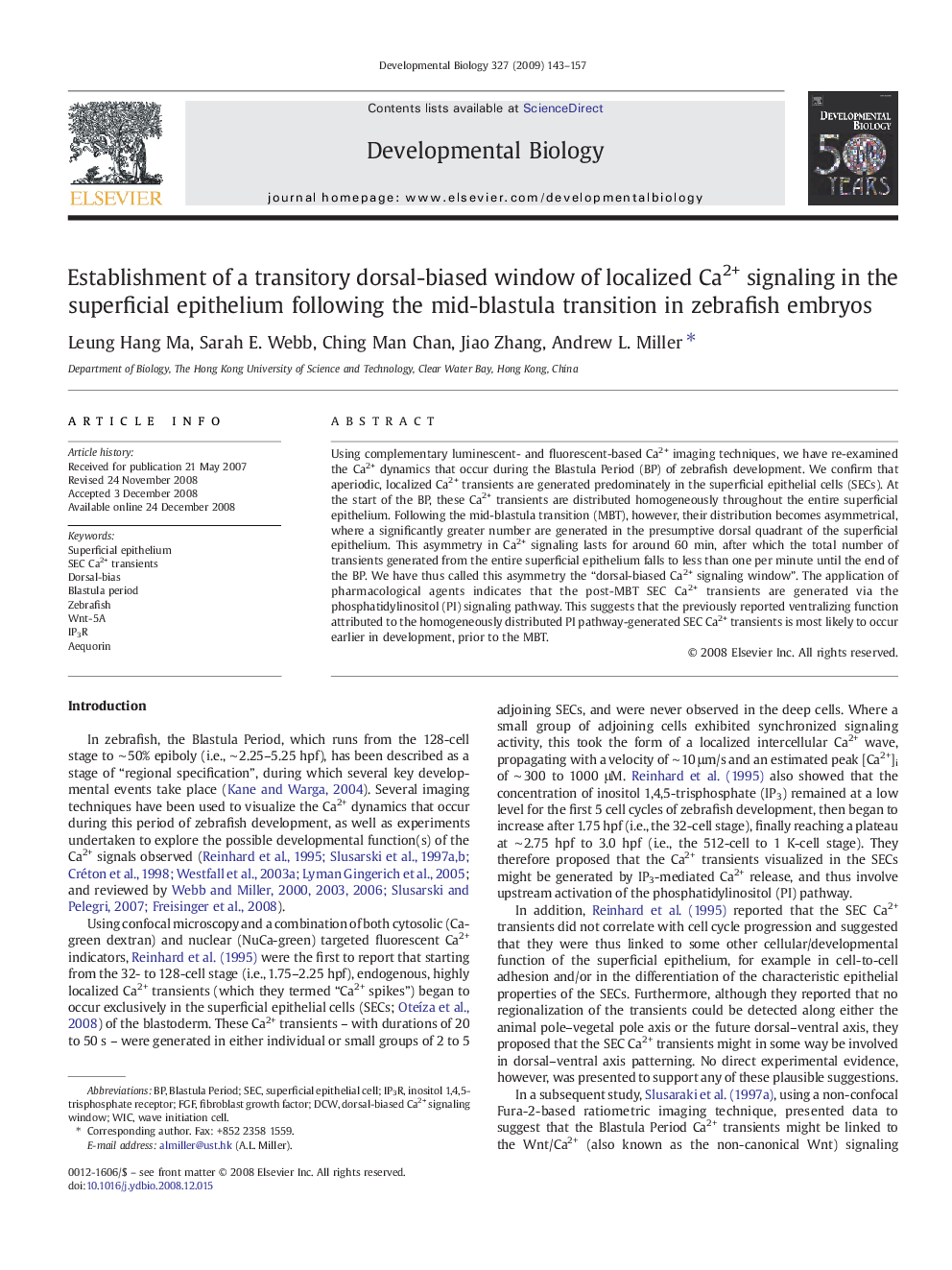| Article ID | Journal | Published Year | Pages | File Type |
|---|---|---|---|---|
| 10933491 | Developmental Biology | 2009 | 15 Pages |
Abstract
Using complementary luminescent- and fluorescent-based Ca2+ imaging techniques, we have re-examined the Ca2+ dynamics that occur during the Blastula Period (BP) of zebrafish development. We confirm that aperiodic, localized Ca2+ transients are generated predominately in the superficial epithelial cells (SECs). At the start of the BP, these Ca2+ transients are distributed homogeneously throughout the entire superficial epithelium. Following the mid-blastula transition (MBT), however, their distribution becomes asymmetrical, where a significantly greater number are generated in the presumptive dorsal quadrant of the superficial epithelium. This asymmetry in Ca2+ signaling lasts for around 60Â min, after which the total number of transients generated from the entire superficial epithelium falls to less than one per minute until the end of the BP. We have thus called this asymmetry the “dorsal-biased Ca2+ signaling window”. The application of pharmacological agents indicates that the post-MBT SEC Ca2+ transients are generated via the phosphatidylinositol (PI) signaling pathway. This suggests that the previously reported ventralizing function attributed to the homogeneously distributed PI pathway-generated SEC Ca2+ transients is most likely to occur earlier in development, prior to the MBT.
Keywords
Related Topics
Life Sciences
Biochemistry, Genetics and Molecular Biology
Cell Biology
Authors
Leung Hang Ma, Sarah E. Webb, Ching Man Chan, Jiao Zhang, Andrew L. Miller,
